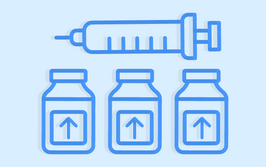Pushing the Boundaries of Bioprocessing
Biopharma tech continues to advance so why is downstream processing such a headache? Chromatography, in particular, is an expensive process – but improvements are being made.
Jungmin Oh | | 4 min read | Opinion

Downstream processing in biotechnology and pharmaceutical industries has undergone significant advancements in recent years. We’ve seen increased adoption of single-use technology, which can reduce contamination risks, lower capital costs, and increase manufacturing flexibility. Additionally, continuous processing has gained traction over traditional batch processing because of its productivity and footprint advantages. Advanced chromatography techniques have also evolved, resulting in higher purity levels, increased throughput, and enhanced efficiency in purification. Furthermore, there’s been a focus on process intensification, employing higher capacity resins, multi-column chromatography systems, and integrated process trains. Automation and digitalization technologies have also been integrated to improve process control, data management, and real-time monitoring of critical parameters.
And yet, despite these notable advances, downstream processing continues to present challenges. The complexity of biologics necessitates meticulous purification processes, often involving multiple downstream steps. Companies also need to consider equipment scalability, process transferability, and maintaining quality at larger scales. All of this demands substantial investments in process optimization.
At the same, downstream processing is inherently expensive. Raw materials and consumables can all be pricey – and the costs increase significantly as production is scaled up. Low productivity and yields are also commonplace because of inefficient recovery and purification processes, leading to suboptimal manufacturing efficiency that increases costs even further. Complex purification processes with multiple steps, including chromatography and filtration, require careful tuning to balance purity, yield, and productivity. Ensuring product stability and shelf-life while removing impurities such as host cell proteins and DNA demands robust purification strategies and precise control over storage conditions.
Focusing on chromatography processes
Chromatography is a pivotal technique in downstream processing. Here, the key challenges include achieving sufficiently high selectivity to separate the target biopharmaceutical from impurities (particularly for complex molecules with similar properties) and obtaining adequate resolution between closely related species to ensure desired purity levels (as just one example, consider the problems many biopharma manufacturers now face in separating empty/full capsids of AAV particles).
The limited binding capacity of chromatography columns can hinder throughput and increase processing time, especially in large-scale production, while scaling up processes poses challenges related to column packing and flow dynamics. Chromatography is also an expensive part of the downstream process – the resins, buffers, and the hardware itself can all come with high price tags.
However, chromatography equipment and resin technologies are continuously evolving. Advancements in resin technology are focusing on creating novel stationary phases with improved selectivity, capacity, and stability – enabled by clever chemistry, such as surface modifications and ligand immobilization techniques, tailored to specific biomolecules and purification challenges. Multi-modal and mixed-mode resins integrate various chromatographic functions into a single stationary phase, providing enhanced selectivity and flexibility to purify complex biomolecules. Continuous chromatography systems are also gaining traction as an alternative to batch chromatography, offering higher productivity, reduced buffer consumption and a smaller footprint.
Companies can enhance their chromatography processes by focusing on key areas such as process characterization and understanding, in-line dilution and buffer management, and process modeling and simulation. Understanding biomolecule properties and using multi-mode resins can improve impurity separation, and optimizing buffer management with in-line dilution systems can enhance reproducibility and scalability, while reducing operating costs. Additionally, employing computational modeling tools aids in predicting process performance and troubleshooting, ultimately maximizing efficiency, productivity, and reliability.
Additionally, process intensification strategies, including continuous chromatography and high-throughput chromatography, aim to improve efficiency and sustainability. By integrating sustainability considerations into process design, operation and technology development, the biopharmaceutical industry is actively working towards making chromatography processes more environmentally friendly and socially responsible, contributing to a sustainable future for biopharmaceutical manufacturing.
What lies ahead
The future of chromatography technology in biopharma is poised for significant advancements and transformations. My predictions include a surge in automation and integration fueled by robotics, AI, and real-time monitoring, and more streamlined operations. Automation streamlines processes by minimizing manual intervention and errors, performing tasks, such as column packing, sample loading, and fraction collection, with high precision and consistency, while AI and machine learning could optimize chromatography by analyzing large datasets, predicting optimal process parameters, and facilitating adaptive process control. The result? Faster development, fewer experimental iterations, and improved scalability. Additionally, I expect progress in miniaturization technology and the development of tailored resins that can help improve throughput and selectivity for microfluidic systems and innovative stationary phases. Miniaturization technologies, including microfluidic devices and microscale chromatography columns, offer advantages such as smaller sample volumes, reduced reagent consumption, and faster analysis times – again contributing to sustainability efforts. Real-time monitoring and control capabilities, powered by sensor technology and advanced data analytics, further optimize chromatography processes, ensuring consistent product quality and yield.
Overall, the future of chromatography technology in biopharma holds promise for enhancing efficiency, productivity, and sustainability in downstream processing. Embracing emerging technologies, innovative approaches, and collaborative partnerships will enable the biopharmaceutical industry to overcome current challenges and achieve new levels of excellence in chromatography-based purification of biologics.
Manager, New Product Development, Avantor



















